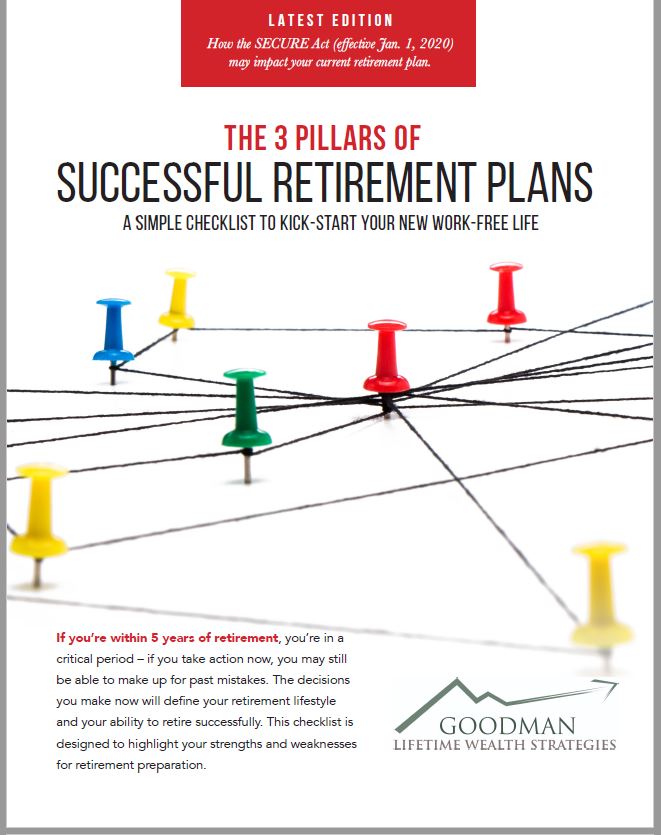In this month’s recap: Stocks stumbled as investors worried that the Fed would maintain its tight monetary posture due to ongoing inflation.
U.S. Markets
Stock prices stumbled in February owing to growing worries that the Fed would maintain its tight monetary posture in the face of continuing inflation.
For the month, the Dow Jones Industrial Average lost 4.19 percent, whereas the Standard & Poor’s 500 Index fell 2.61 percent. The Nasdaq Composite, up nearly 11 percent in January, dipped 1.11 percent.1
Strong Start Stumbled
The month began the way January ended—with stocks climbing higher on solid earnings reports and encouraging inflation data. The markets enthusiastically greeted the Fed’s 25-basis-point hike in interest rates, relieved that the increase was in line with expectations. Spirits were further lifted by constructive comments made by Fed Chair Jerome Powell following the rate hike announcement.
The optimism did not last long, however. Stocks struggled as the direction of future monetary policy weighed on investors throughout the month.
Uncertainty with Interest Rates
The month began the way January ended—with stocks climbing higher on solid earnings reports and encouraging inflation data. The markets enthusiastically greeted the Fed’s 25-basis-point hike in interest rates, relieved that the increase was in line with expectations. Spirits were further lifted by constructive comments made by Fed Chair Jerome Powell following the rate hike announcement.
The optimism did not last long, however. Stocks struggled as the direction of future monetary policy weighed on investors throughout the month.
Stocks’ Slide Continued
The slide in stock prices continued into the end of the month, dragged down by further rate hike concerns and disappointing guidance from two major retailers that called into question consumer health. Stocks felt even more pressure after January’s Personal Consumption Expenditures (PCE) price index—the Fed’s preferred benchmark for gauging inflation—reflected hotter-than-expected price increases and vigorous consumer spending.2
Sector Scorecard
One silver lining regarding the difficult month was that the technology sector, one of the worst-performing groups in 2022, notched a slight gain of 0.41 percent.
The remaining sectors retreated, however, including industrials (−0.86 percent), communications services (−2.87 percent), consumer discretionary (−2.13 percent), consumer staples (−2.32 percent), energy (−6.94 percent), financials (−2.22 percent), health care (−4.64 percent), materials (−3.33 percent), real estate (−5.86 percent), and utilities (−5.92 percent).3
What Investors May Be Talking About in March 2023
The Federal Open Market Committee (FOMC) is scheduled to meet on March 21–22, and the Fed at its previous meeting indicated that it intends to raise short-term interest rates by another 0.25 percent.4
However, the Fed will now need to digest fresh information on the labor market and inflation that may impact its upcoming rate decision.
Investors will be keenly parsing the FOMC meeting announcement accompanying the FOMC’s decision while also paying close attention to comments by Fed Chair Powell, who holds a press conference immediately following the meeting announcement.
In the Fed’s previous meeting, Powell acknowledged that a disinflationary trend has emerged, but he also cautioned that the Fed will evaluate the labor market and new inflation data for further guidance.
As such, it may be more Powell’s comments, rather than the expected rate hike, that move markets and set the tone for the weeks to follow.
World Markets
The prospect of higher rate hikes in Europe—and questions about the pace of China’s reopening—sent overseas stocks lower in February, with the MSCI-EAFE Index slipping 2.07 percent.5
European markets were higher, with Spain, Italy, and France leading the way. Germany picked up 1.57 percent, and the U.K. tacked on 1.35 percent.6
Pacific Rim markets trended lower, with China’s Hang Seng index dropping 9.41 percent and Australia’s ASX 200 falling 2.92 percent.7
Indicators
Gross Domestic Product: Economic growth in the fourth quarter was revised lower to 2.7 percent from its initial estimate of 2.9 percent. The downward revision was primarily attributable to lower consumer spending than originally estimated.8
Employment: New hires in January surged by 517,000, sending the unemployment rate to a 53-year low at 3.4 percent. Despite the robust job gains, wage growth remained below inflation, rising 4.4 percent from the previous January. The labor force participation rate slightly rose to 62.4 percent.9
Retail Sales: Consumer spending rebounded in January, climbing 3.0 percent. Retail sales exceeded estimates, coming off two consecutive months of declines.10
Industrial Production: Industrial production was unchanged in January, dragged down by a drop-off in utilities output owing to an unseasonably warm January. Manufacturing and mining increased production after two months of decline, rising 1.0 percent and 2.0 percent, respectively.11
Housing: Housing starts dropped by 4.5 percent, with single-family home starts declining 4.3 percent. Year-over-year housing starts tumbled 21.4 percent.12
Sales of existing homes lost 0.7 percent from a month ago, falling to the lowest level in more than 12 years. Year-over-year sales declined by 36.9 percent.13
New home sales rose 7.2 percent, the highest rate in nearly a year. The unexpected increase was the result of a surge in sales in the South, with all other regions experiencing declining sales.14
Consumer Price Index: Consumer prices firmed in January, rising 0.5 percent. The gain was an increase from the prior month and higher than consensus estimates. However, the year-over-year increase of 6.4 percent came in below the prior month’s 12-month rise of 6.5 percent—the seventh consecutive month of year-over-year declines. Core inflation (which excludes energy and food) was 0.4 percent, whereas the year-over-year increase was 6.4 percent, a tick lower than December’s 6.5 percent year-over-year read.15
Durable Goods Orders: Durable goods orders declined 4.5 percent largely owing to a comparison anomaly in which a historically large order for aircraft was booked in December, leading to a month-over-month drop. Excluding transportation, orders were up 0.7 percent.16
The Fed
The minutes from the last meeting of the FOMC indicated that nearly all members favored the decision to raise rates by a quarter percentage point.
However, some Fed governors indicated they were inclined to vote for, or would have also voted for, a 0.50 percent hike to more quickly achieve the Fed’s target range for short-term interest rates.
The minutes also suggested that the Committee may hike rates by a quarter percentage point at its next meeting, which is scheduled for March 21–22.17
| MARKET INDEX | Y-T-D CHANGE | February 2023 |
| DJIA | -1.48% | -4.19% |
| NASDAQ | 9.45% | -1.11% |
| S&P 500 | 3.40% | -2.61% |
| BOND YIELD | Y-T-D | February 2023 |
| 10 YR TREASURY | -.04% | 3.92% |
Sources: Yahoo Finance, February 28, 2023
The market indexes discussed are unmanaged and generally considered representative of their respective markets. Individuals cannot directly invest in unmanaged indexes. Past performance does not guarantee future results. U.S. Treasury Notes are guaranteed by the federal government as to the timely payment of principal and interest. However, if you sell a Treasury Note prior to maturity, it may be worth more or less than the original price paid.



Leave a Reply